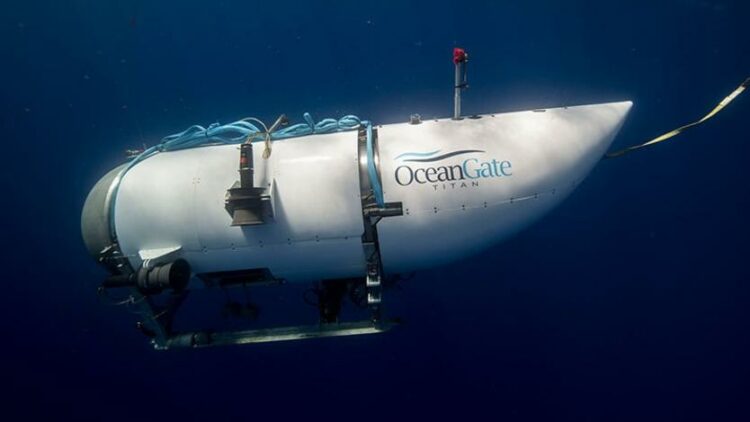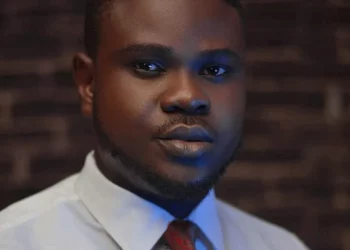Titanic submersible debris found, passengers presumed dead lost and that these men were true explorers who shared
Two men have detailed how they pulled out of the ill-fated Titan dive at the 11th hour over safety concerns and a last-minute professional commitment.
Chris Brown, a millionaire digital marketing executive, told British media outlets he changed his mind about taking part in the dive after coming to the conclusion that the operating company, OceanGate, had “cut too many corners” when it came to safety.
“I found out they used old scaffolding poles for the sub’s ballast—and its controls were based on computer-game–style controllers,” he told the Sun newspaper in an interview published on Tuesday.
“If you’re trying to build your own submarine you could probably use old scaffold poles. But this was a commercial craft. Eventually I emailed them and said, ‘I’m no longer able to go on this thing.’ I asked for a refund after being less than convinced.”
Since the Titan went missing on Sunday, it has emerged that OceanGate had been repeatedly warned about several safety risks relating to the vessel’s construction, and that the submersible’s pilot steers the sub with a $29.99 battery-powered gaming controller.
Brown said he had paid a deposit for the trip, which he had agreed to go on “after a few beers” with Hamish Harding—the billionaire businessman currently aboard the Titan—while the pair were vacationing on Richard Branson’s private paradise, Necker Island.
At the time, the Titan was still being developed, and Brown and Harding had each paid a 10% deposit on the £80,000 ($102,000) voyage. Since then, the price of a ticket to explore the Titanic wreck aboard the Titan has risen to $250,000.
According to The Sun, Brown is a multimillionaire, thanks to a successful digital marketing career. He reportedly met Harding on a 2016 trek to the South Pole alongside astronaut Buzz Aldrin.
While Brown said he was “not one to shy away from risk,” he explained that he had “decided the risks were too high in this instance.”
Fortune asked an OceanGate spokesperson about Brown’s comments, but received no response.
In a separate interview with U.K. broadcaster ITV, Brown said all of those aboard the Titan “will have looked at the risks and decided those were risks they wanted to take.”
“Every now and then something is going to go wrong, there’s going to be accidents—there’s accidents in the regular world as well, but exploration tends to push those risks to the limit,” he noted.
Brown added that Harding would likely be keeping morale high on the Titan.
“He will be extremely calm—he’s well aware of risks in the exploration space. He’s probably going through logically all the ways they can help themselves whilst making it as easy as possible to be found,” Brown told ITV.
“He’s got the perfect personality for such a situation; he’s a very calming individual, a logical thinker. He’ll be a calming influence on the other people on the vessel, and I am sure he’ll be doing everything he can to eke out that oxygen and keep morale and spirits up.”
‘Still time left’
Meanwhile, another would-be passenger who is now assisting with the rescue operation revealed this week that he had also canceled his place on the Titan at the last minute.
In a Facebook post on Monday, David Concannon, an Idaho-based trial lawyer whose areas of expertise include commercial litigation and wrongful death, said he was supposed to be on the dive but had to pull out “to attend to another urgent client matter.”
Concannon is also the founder of Explorer Consulting, which offers companies advice on the “business of exploration.” Its services include developing risk management plans, planning expeditions—including the chartering of ships, aircraft, and other equipment—and providing on-site expedition leadership.
He said on Monday that the previous evening he had been called and asked to provide “whatever assistance” he could, to which he “immediately agreed.”
“I know you are concerned for the safety of me and everyone at sea, but PLEASE STOP calling, texting, messaging, and sending all other forms of communication during this critical time,” he urged well-wishers. “You are interfering with more important communications that need to be made to resolve this situation as quickly and as safely as possible.”
He has continued to provide updates from the front lines of the rescue mission.
On Wednesday, he said there was “still time left” and rescuers “continue to remain hopeful for the safe return of our friends and loved ones.”
Concannon did not immediately respond to Fortune’s request for comment.
Concannon served as director of The Explorers Club between 2002 and 2006. Hamish Harding currently serves as one of the organization’s trustees.
According to his company’s website, Concannon has been on three submersible dives to explore the Titanic shipwreck, and is one of only a handful of people to ever have made a deep submersible dive to a depth in excess of three miles.
Between 2010 and 2013, he organized and led the Apollo F-1 recovery project for Amazon founder Jeff Bezos’s private exploration firm Bezos Expeditions, retrieving the remnants of engines from several Apollo lunar missions from depths of 14,000 feet beneath the Atlantic Ocean.
In a separate post on Wednesday, Concannon shared a video from the Bezos Apollo project, noting that the recovery mission had gone “deeper than the Titanic [shipwreck].”
“This is the type of equipment that needs to be on-site but is not on-site,” he said.
Rescue teams are currently making their last desperate push to locate the Titan sub, which went missing off the coast of Newfoundland, Canada, on Sunday with five people on board.
The crew, which includes Pakistani businessman Shahzada Dawood and his 19-year-old son, Suleman; French explorer Paul-Henri Nargeolet; and Stockton Rush, CEO of OceanGate, only had a four-day supply of emergency oxygen on the submersible when it set off to find the wreckage of the Titanic.
The U.S. Coast Guard said Wednesday that more sounds had been heard in the search, but it remained unclear where they were coming from.
This story was originally featured on Fortune.com








